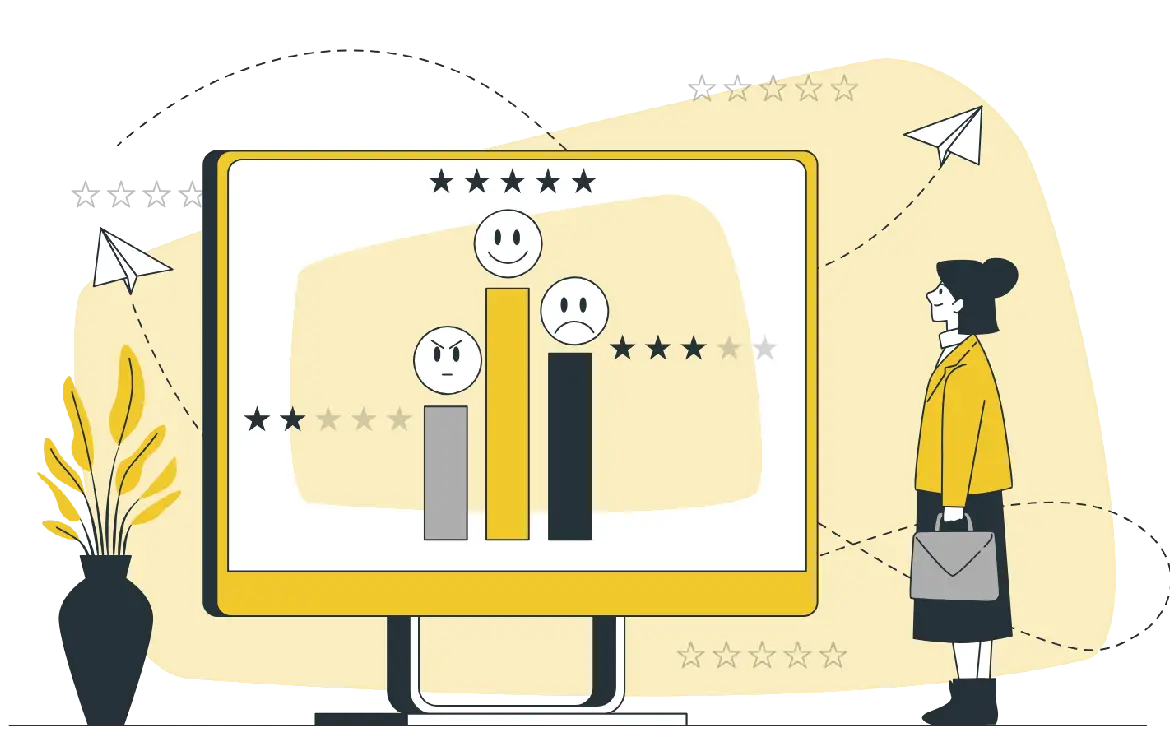In the ever-evolving digital landscape, your website is your digital storefront. It’s often the first point of contact for potential customers, clients, or readers.
However, if your website is old and the content hasn’t been updated since long , it can have a significant impact on your online presence and business.
In this blog article, we’ll explore the consequences of neglecting your website’s content and discuss why keeping it fresh and up-to-date is crucial.
#1 -- Outdated Information Leads to Confusion:
One of the most immediate consequences of an old website with outdated content is the potential for confusion among your visitors.
If the information on your site is no longer accurate or relevant, it can misinform or frustrate your audience.
Users might encounter conflicting information or outdated details, which can lead to a poor user experience. This, in turn, can discourage potential customers or readers from engaging with your site further.
Think about it from the perspective of someone seeking information or trying to make a purchase on your site.
Outdated product details, incorrect contact information, or irrelevant blog posts can lead to frustration and mistrust.
To maintain a positive user experience, it’s essential to keep your content current and accurate.
#2 — Reduced Search Engine Visibility:
Search engines like Google constantly crawl the web to index and rank websites.
They prioritize fresh and relevant content when determining search engine rankings. If your website’s content hasn’t been updated since long, it may lose its visibility in search results.
This means that potential visitors who are searching for products, services, or information related to your niche may not even find your website.
Search engine optimization (SEO) is an ongoing process, and regular content updates are a key aspect of it.
Fresh content not only attracts search engine crawlers but also signals to them that your website is active and relevant.
When your content is updated regularly, you have a better chance of ranking higher in search results, attracting more organic traffic, and reaching a broader audience.
#3 -- Declining Website Traffic:
The decreased search engine visibility resulting from outdated content can directly impact your website’s traffic.
Without a steady flow of organic visitors, your website’s overall performance and engagement levels may decline.
Lower traffic can also have a cascading effect on your online presence and potential revenue.
A drop in traffic means fewer eyes on your content, products, or services.
This can lead to a decrease in leads, conversions, and revenue.
For businesses and content creators, maintaining a healthy flow of website traffic is essential to staying competitive and achieving your online goals.
#4 -- Eroded Trust:
Trust is a critical factor in the success of any website.
Users who encounter outdated content may perceive your website as less trustworthy and reliable. This can erode the trust of your audience, particularly if the content is related to current news, trends, or critical information.
Trust is hard to build and easy to lose.
Outdated content can give the impression that your website is neglected, and this perception can extend to your brand as a whole.
Users may question whether your products, services, or information are still relevant or credible, leading them to seek alternatives elsewhere.
#5 -- Missed Opportunities:
The digital landscape is ever-changing, with new trends, technologies, and opportunities emerging regularly.
An old website with outdated content may miss out on opportunities to engage with the audience and respond to changing market dynamics or customer needs.
For businesses, this can mean missing out on potential customers or new revenue streams.
For content creators, it can result in reduced readership and influence.
Staying up to date with your content allows you to adapt to changing circumstances and capitalize on emerging opportunities.
#6 -- Security Vulnerabilities:
An old website may be running outdated software, plugins, or infrastructure.
This can make it more susceptible to security vulnerabilities.
As cyber threats continue to evolve, maintaining a secure website is of utmost importance.
Outdated software and plugins are often targeted by hackers because they may have known vulnerabilities that have not been patched.
Security breaches can result in data leaks, unauthorized access, or other malicious activities that can harm your reputation and compromise user information.
Regular updates and maintenance are essential to keep your website secure.
#7 -- Compatibility Issues:
The way people access websites has evolved significantly since long.
The rise of mobile devices and various web browsers means that websites must be responsive and compatible with a wide range of screen sizes and platforms.
An old website may not display properly on modern browsers and devices, leading to a poor user experience.
Compatibility issues can deter visitors from exploring your site, especially if they encounter broken layouts, slow loading times, or non-responsive design.
In a mobile-centric world, failing to provide a user-friendly experience on all devices can result in a significant loss of potential customers or readers.
#8 -- Legal Compliance:
Depending on the type of website you operate, there may be legal requirements related to content updates.
This can include compliance with accessibility guidelines, privacy policies, or adherence to industry-specific regulations.
Failing to update your website to meet these legal requirements can lead to legal troubles and potential fines.
It’s essential to stay informed about the relevant laws and regulations that apply to your website and make the necessary updates to ensure compliance.
#9 -- Declining Relevance and Impact:
Relevance is key in the fast-paced digital world.
An old website can quickly lose relevance as trends, technology, and audience preferences change.
This can result in a reduced impact on your target audience.
For content creators, your articles and blog posts may become obsolete or less engaging as they age.
For businesses, your products or services may no longer meet the evolving needs and expectations of your customers.
Staying up to date with fresh, relevant content ensures that you remain at the forefront of your industry and maintain your relevance and impact.
#10 -- Wasted Investment:
Creating a website, whether for business or personal use, requires an investment of time, money, and resources.
All the effort put into designing, developing, and launching your site can go to waste if you neglect it and allow it to become outdated.
An outdated website represents a wasted investment.
Your initial investment can be undermined by lost opportunities, reduced traffic, and a decline in user trust.
To make the most of your web presence, it’s essential to continue investing in your website through regular updates and maintenance.
To Sum Up:
An old website with content last updated in long back can have various consequences, ranging from a poor user experience and decreased search engine visibility to security vulnerabilities and legal compliance issues.
To address these concerns, regular content updates, responsive design, and security maintenance are crucial.
By keeping your website fresh and up-to-date, you can enhance user trust, attract more visitors, and ensure that your online presence remains competitive in an ever-changing digital landscape.
Don’t let your website languish in the past—invest in its future success by regularly updating your content and design.



